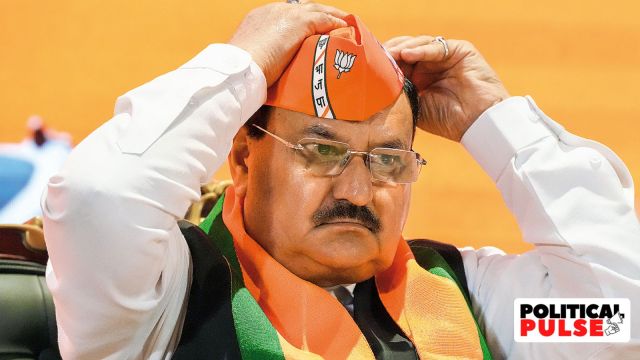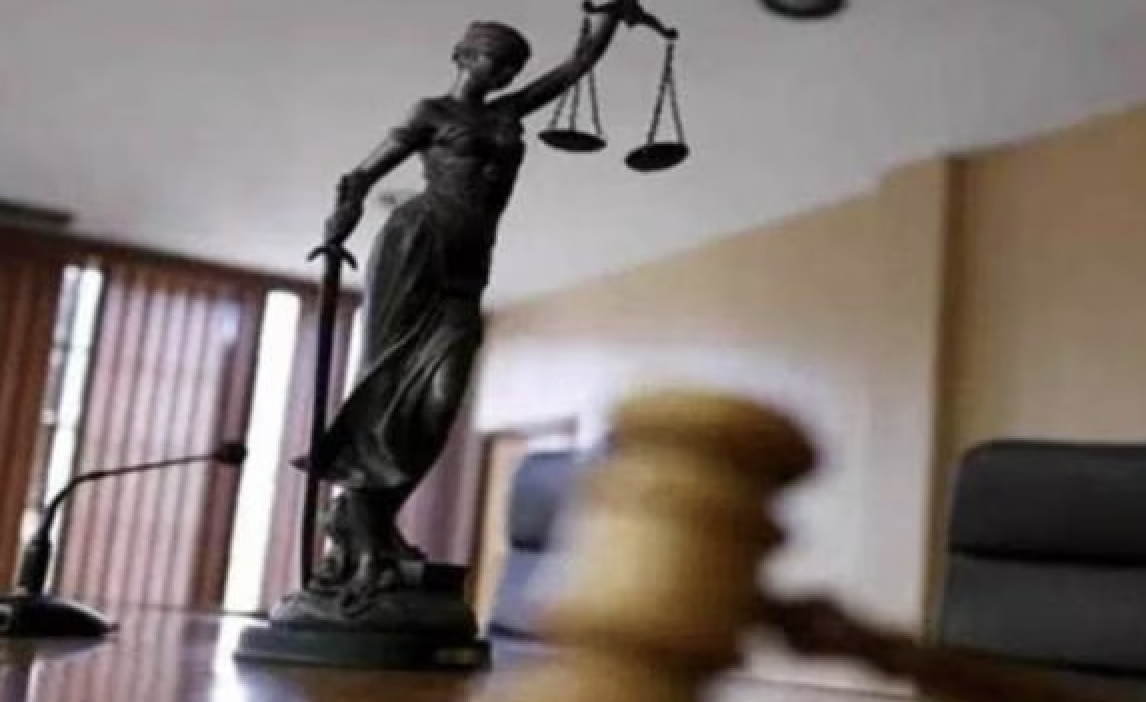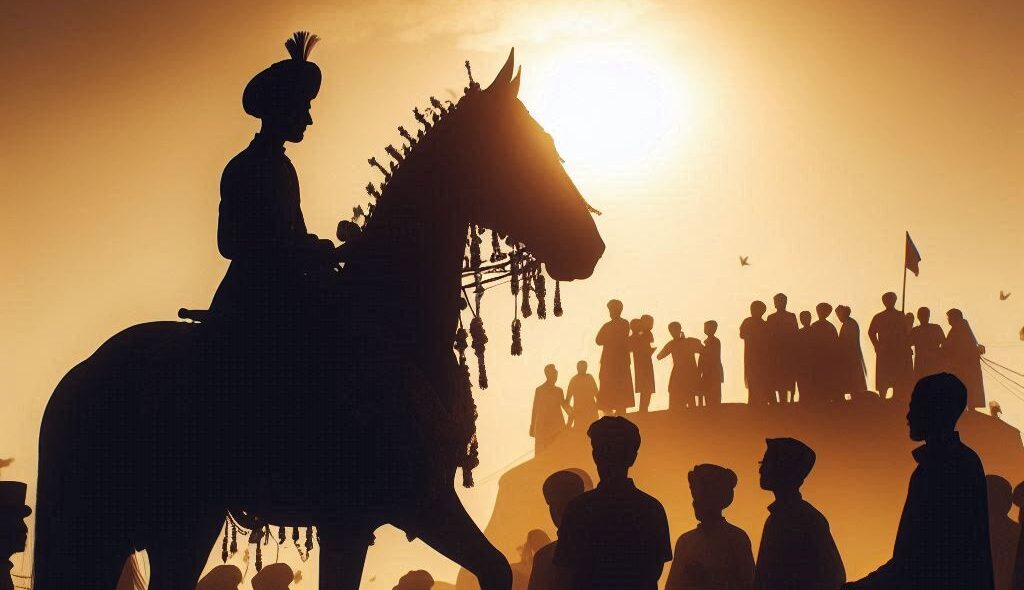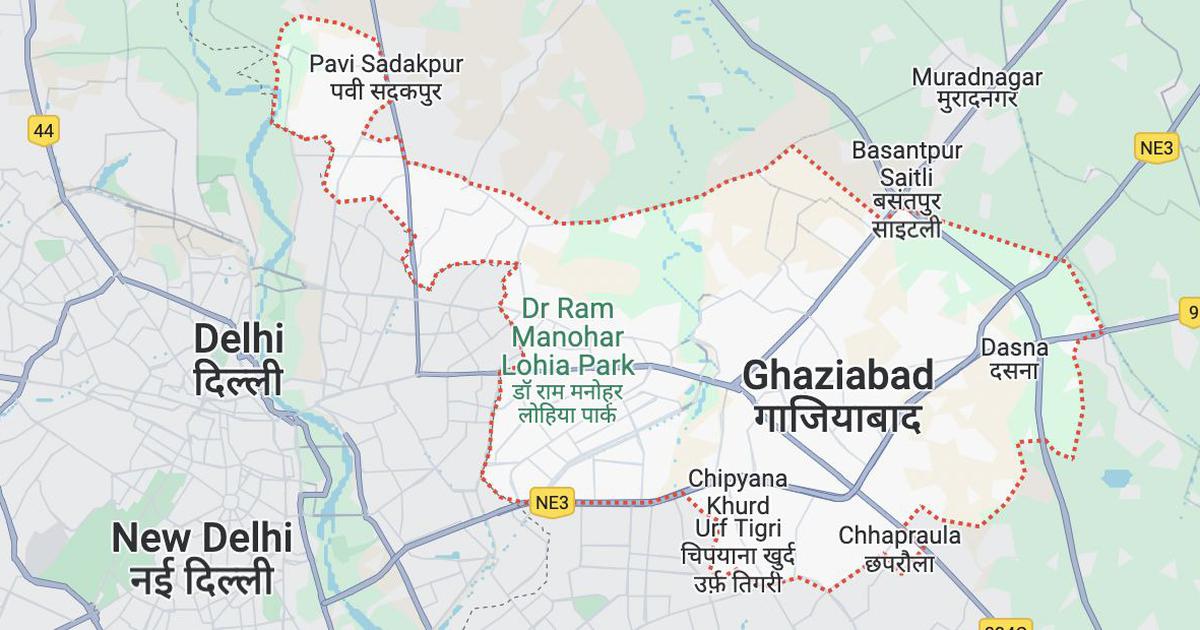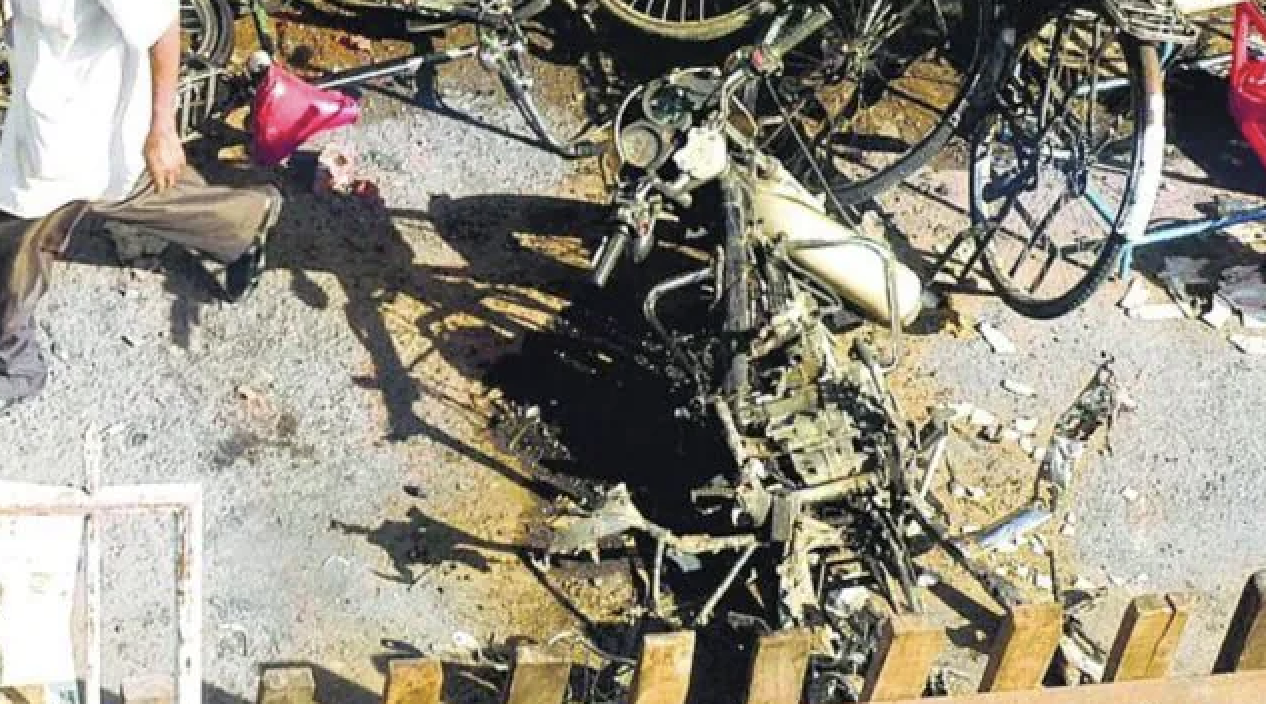
In July last year, security forces in Kashmir claimed to have killed three “unidentified hardcore terrorists” in a gunfight in Amshipora village of Kashmir’s Shopian district.
The claim unravelled within a month when three families filed missing persons complaints with the police in Jammu’s Rajouri district. Each had a young member working in Shopian as an ordinary labourer. Two of them were men in their twenties, while the third was a teenager. They had last made phone calls to their families on July 17, a day before the purported gunfight had taken place.
An army inquiry and a police probe into the encounter established that the three suspected militants killed in Amshipora were the missing youth from Rajouri.
In October, Jammu and Kashmir Lieutenant Governor Manoj Sinha visited the three families and assured them that justice will be done.
In December, the Jammu and Kashmir police filed a chargesheet of more than 200 pages against a captain of the Indian Army and two civilians for the alleged abduction and subsequent murder of the three workers.
While the submission of the police chargesheet was seen as an important step in the delivery of justice to the victims’ families, nearly seven months later, the trial is yet to begin. A local court in Shopian has held 13 hearings in the matter since February, but the charges against the accused haven’t been framed yet.
“I don’t even know the government lawyer who is fighting my case,” said Haji Mohammad Yousuf, the father of Mohammed Ibrar, one of the three young workers killed in the Amshipora encounter. “You won’t believe it but I am not even aware of the dates when our case was taken up.”
Scroll.in examined the police chargesheet and found it had failed to address several key aspects of the case.
When DNA samples established the truth
On July 18, 2020, the Jammu and Kashmir police issued a statement saying security forces had conducted a search operation in Amshipora on a “specific input by 62RR about the presence of terrorists” – referring to the 62 unit of the Rashtriya Rifles, which is a counter-insurgency force of the Indian Army.
The police statement claimed the army personnel led the security operation and before they could be joined by their counterparts from the Jammu and Kashmir police and the Central Reserve Police Force, they came under gunfire from militants. As they retaliated, three militants were killed.
The bodies of the three men were taken to Baramulla district, 125 km away, where they were buried after “medico-legal formalities including collection of their DNA”, the police statement said.
No photographs were released by the police at the time, nor were the three slain men identified. A case under FIR No. 42/2020 was registered by the Shopian police detailing the army’s version of the gunfight.
On August 9, in Rajouri district of the Jammu region, 160 km from Shopian, three families filed missing persons complaints with the police.
All three families were related. Each had a young member missing since July 17. Two of them were in their twenties – 25-year-old Mohammed Ibrar of Tarkasi village and 20-year-old Imtiyaz Ahmad of Dharsakri village. The youngest, 16-year-old Ibrer Ahmad, was also from Dharsakri. The families said their boys had gone to Shopian to look for work.
With the families’ complaints garnering public attention, the Indian Army launched a formal inquiry into the Amshipora encounter on August 18.
A month later, the army said it had found “prima facie evidence” that its personnel had misused the powers conferred on them under the Armed Forces (Special Powers) Act, 1990, during the encounter. It added that disciplinary proceedings under the Army Act had been initiated against them.
A week later, Jammu and Kashmir police announced that DNA samples of the three suspected militants killed by the armed forces in Amshipora in Shopian in July had matched with those of their parents in Rajouri district.
In the first week of October, the bodies of the three labourers were exhumed from the Baramulla graveyard in the presence of family members and handed over to the families.
What the police investigation concluded
Five months after the controversial gunfight in Amshipora, the Jammu and Kashmir police filed a chargesheet in the case before the court of Chief Judicial Magistrate, Shopian.
The police investigation had concluded that the three victims were ordinary labourers and had no links with militancy. The chargesheet identified three men as the accused and stated that a case of murder, abduction and destruction of evidence was “prima facie” established against them.
One of the accused was Captain Bhoopendra Singh alias Major Basheer Khan of 62 Rashtriya Rifles. He had been put under “closed arrest” by the army on August 15 after a parallel Court of Inquiry had been established into the encounter, the chargesheet said. While the Armed Forces Special Powers Act gave the captain immunity from police arrest, he had been interrogated by the Special Investigation Team of the police, which had also recorded his statement, the chargesheet added.
The other two accused were civilians: Tabish Nazir Malik of Chowgam village in Shopian, and Bilal Ahmad Lone of Arabal Nikas village in Pulwama district. Both had been arrested by police on September 28. Lone turned an approver in the case – he confessed to being an accomplice and said he was willing to testify as a witness against the other accused.
The source of the weapons
Despite Lone turning approver, the chargesheet leaves many vital questions unanswered. For instance, the source of the weapons that the police concluded were illegally planted on the bodies of the three workers.
On the day of encounter on July 18, the army had claimed that “three unidentified hardcore terrorists got neutralised” after it launched a Cordon and Search Operation the previous day in Amshipora village. The operation was based on the army’s “own input” about the presence of “unknown terrorists” in the village.
These details were part of a complaint before the police by Major Kush, the adjutant of the 62 Rashtriya Rifles unit (Dogra) with its headquarters in Kathuhallen, Shopian.
After receiving a written report about the encounter from the army, Shopian police filed a First Information Report in the encounter (FIR No: 42/2020) at Heerpora police station.
According to the army’s report to the police, two pistols with two magazines, four empty pistol cartridges, 15 live cartridges and 15 empty cartridges of the AK Series weapon and “other objectionable items were recovered from the encounter site”.
Subsequently, however, an investigation by the police revealed that these weapons seized during the encounter had been planted on the bodies of the three youths. While the chargesheet said that the weapons were “illegally arranged” by the three accused, the police investigation could not trace the source of these weapons.
The closest lead about the source of illegal weapons came from a Special Police Officer of the Jammu and Kashmir Police, Fayaz Ahmad Rather, a resident of Poonch district who was posted in Srinagar. Unlike regular policemen who are recruited through a well-laid out process and paid decent salaries, Special Police Officers are appointed by deputy commissioners under a temporary arrangement with meagre salaries. Jammu and Kashmir has a more than 30,000-strong workforce of Special Police Officers, who aid the regular police in maintaining law and order, gathering intelligence and anti-militancy operations.
In his statement recorded under section 164 of Code of Criminal Procedure, Rather said his relative and friend Tabish Nazir Malik, one of the accused in the case, asked him to meet Bilal Ahmad Lone and Captain Bhoopendra Singh in Srinagar. While Rather declined to meet them, he received a call on his phone the next day from Singh asking him to arrange a weapon. “I told him I am just an SPO and the question of arranging a weapon doesn’t arise,” Rather said in the statement.
According to Rather’s statement, Malik had shared Rather’s personal phone number with Singh after he was “continuously harassed” by the captain to arrange weapons.
Where’s the prize money?
The prime motivation behind the killing of the three innocent civilians in a fake encounter, according to the police investigation, was “prize money” of Rs 20 lakhs.
But the police investigation was unable to recover this money or establish any financial trail. The chargesheet said that neither of the three accused revealed “anything fruitful regarding the prize money of Rs 20 lakhs”. Police officials speaking on the condition of anonymity said that the investigators did not find substantial amounts of money in the bank accounts of either the accused or their relatives.
The chargesheet said army captain Bhoopendra Singh had “furnished false information to mislead the senior officers and for getting lodgment of FIR done to tailor fit his motive for grabbing prize money in furtherance of criminal conspiracy.”
This part of the chargesheet invited a sharp reaction from the army. Its spokesperson in Srinagar said in a statement on January 11: “It is clarified that Indian Army has no system of cash awards for its personnel for any acts in combat situations or otherwise in the line of duty.”
“This is one of the biggest lacunae in the police investigation,” explained a lawyer familiar with the case, who did not want to be identified fearing reprisal by the authorities. “If the investigation is not able to show the evidence about prime motivation behind the conspiracy, the case will collapse and the accused will walk free.”
A senior government official who is familiar with the case confirmed to Scroll.in that no additional evidence has been produced by the police after the filing of the chargesheet. “Neither is there anything about the trail of money, nor is there any additional information about the source of illegal weapons planted on the slain,” he said, speaking on the condition of anonymity since he is not authorised to speak to the media.
The missing statements
Another handicap in the police investigation, said the lawyer, is the lack of access to the two senior army officers relevant to the case. One of them is Major Kush, the adjutant whose written report to the police became the basis for the registration of a case on the day of the encounter. The other is Major Amit Kumar Rai who was part of the operation.
Both of them were posted with the unit of the 62 Rashtriya Rifles that Captain Bhoopendra Singh was part of. The chargesheet noted that the statement of the Commanding Officer of the unit was recorded under Section 161 of Code of Criminal Procedure but the police was unable to record statements of Kush and Rai “in view of their transfer to the frontiers”. The chargesheet, filed in December last year, had mentioned that questionnaires were served to both Major Kush and Major Amit. However, their statements, at the time of filing of the chargesheet, were still awaited.
According to the lawyer familiar with the case, the statements have still not been submitted to the court. “Their statements are key to the case,” he said. “It is strange. Why is it so difficult to get their statements recorded?”
The police had also recorded statements of four army personnel who were led by Captain Bhoopendra Singh on the day of the incident. In their deposition, the army personnel stated that Singh had proceeded to the spot of encounter alone along with Malik and Lone from their camp. “…while as they [four army personnel] were directed by the said accused Captain to reach the spot leading them to believe that contact with militants was possible and that as they were approaching the spot on foot after disembarking from the vehicle they head few bursts of live ammunition fire even before they had laid the cordon…(sic)”, the chargesheet stated.
When the four personnel asked Singh about the firing, he told them that he had to open fire on the militants without cordon as the “hiding militants” were trying to escape, the chargesheet added.
“In their statements they have clearly stated that they also fired on the structure in which alleged militants had taken shelter on the orders of Singh,” explained the lawyer. “Why aren’t these four army personnel also impleaded as accused in the case?”
Who got the private car?
Establishing the sequence of events leading up to the fake encounter in Amshipora, the police chargesheet said that Captain Singh along with Malik and Lone drove out from the army camp in Reshinagri on July 17 in a private car bearing registration number DL8CU 0649. They drove to Chowgam village where they abducted the three workers from their rented accommodation, took them to Amshipora, where they were gunned down.
According to the police chargesheet, the private car, which had been arranged by captain Singh, belonged to a civilian named Aijaz Ahmad Lone of Reshinagri village. In his statement recorded under section 164 of Code of Criminal Procedure, Aijaz Ahmad Lone deposed that “some soldiers” from the army camp came to his home on July 17, 2020 and asked for his car
He handed over the keys of his car to the soldiers. They told him that they will call him the next day after which he can collect his car from the camp. “Subsequently, the other day on 18.07.2020 army had informed him that the said vehicle A-star bearing registration No. DL8CU 0649 was lying at Amshipora Nar in faulty condition…” the chargesheet noted. Aijaz Ahmad Lone went to the spot and towed his car home with the help of another vehicle.
The police investigation didn’t establish the identity of the soldiers who had asked Aijaz Ahmad Lone to hand over his car to them. “Shouldn’t they be investigated too and questioned? Who asked them to get the car?” the lawyer asked. “Many questions around this aspect of the case are still unanswered.”
Wajahat Hussain, the investigating officer in the case at the time the chargesheet was filed, said he had been transferred since. “I can’t talk about the case,” he said.
Yousuf, who is also related to the other two victims of the encounter, said all three families were feeling let down by the court. “If the accused are in custody and police have completed their investigations, why is justice delayed?” he asked.
This story first appeared on scroll.in


